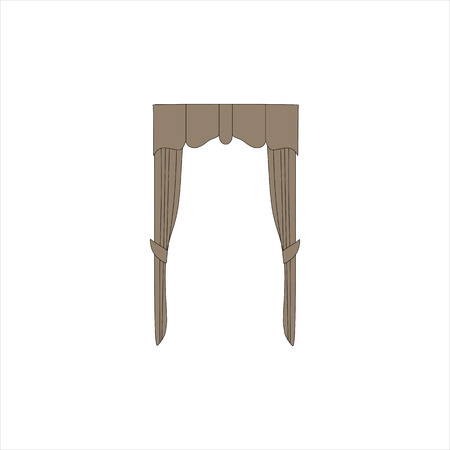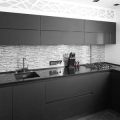Introduction to the British Country-Style Kitchen
The classic British country-style kitchen holds a unique place in both interior design and daily life, blending practicality with an unmistakable sense of warmth and charm. Rooted in rural traditions, this style captures the essence of Britain’s countryside heritage while offering a welcoming space perfect for family gatherings, hearty meals, and everyday living. Far from fleeting trends, the British country kitchen is defined by its timeless appeal—think sturdy wooden cabinetry, natural materials, and a harmonious palette inspired by nature. This inviting atmosphere encourages relaxed living and fosters a sense of connection, making it the true heart of the home. Whether nestled within a period cottage or adapted to a modern setting, achieving the perfect British country-style kitchen is all about balancing characterful elements with thoughtful functionality. In this article, we’ll explore the key features, colours, and materials that bring this enduring look to life.
Key Elements of the Country Kitchen
The quintessential British country-style kitchen is distinguished by its welcoming atmosphere, practical design, and a focus on timeless features. To achieve this look, it’s vital to incorporate certain hallmark elements that are both functional and visually appealing. Below, you’ll find the must-have features that capture the essence of a traditional country kitchen in the UK.
Farmhouse Sinks: The Heart of Rural Charm
No British country kitchen is complete without a classic farmhouse sink, also known as a Belfast or butler sink. Renowned for their deep basins and robust ceramic construction, these sinks are ideal for handling large pots and pans, adding both practicality and a touch of rustic elegance to your space.
Traditional Cabinetry: Timeless Appeal
Shaker-style cabinetry is the backbone of country kitchens, offering simple lines and sturdy craftsmanship. Painted finishes in muted tones—such as sage green or duck egg blue—are especially popular across the UK. Solid timber doors with visible wood grain lend authenticity and warmth, while cup handles or wooden knobs provide an understated finishing touch.
Open Shelving: Showcasing Character
Open shelving is a staple of British country kitchens, allowing you to display cherished crockery, mason jars, and vintage finds. This feature not only adds character but also ensures everyday items are within easy reach. Opt for solid wood shelves with decorative brackets to maintain the traditional feel.
Characteristic Kitchen Islands: A Social Hub
A well-designed kitchen island is more than just extra counter space—it becomes the social heart of your home. In country kitchens, islands often feature butcher-block tops, painted bases, and integrated storage solutions such as wicker baskets or wine racks. They provide a perfect spot for meal prep or casual family gatherings.
Must-Have Features at a Glance
| Feature | Description |
|---|---|
| Farmhouse Sink | Deep ceramic basin; ideal for heavy-duty use; classic white finish |
| Traditional Cabinetry | Shaker style; painted timber; cup handles or wooden knobs |
| Open Shelving | Solid wood shelves; display crockery; easy access to essentials |
| Kitchen Island | Butcher-block worktop; painted base; integrated storage options |
By thoughtfully including these key elements in your design plan, you’ll create an inviting kitchen that reflects true British country style—balancing charm, functionality, and enduring appeal.

3. Choosing the Right Colours
When it comes to capturing the true essence of a British country-style kitchen, the colour palette plays a pivotal role. Unlike modern or urban kitchens that often feature bold, high-gloss finishes, the traditional British approach leans toward understated elegance and gentle warmth. Subtle, muted shades are key, as they create an inviting atmosphere and timeless appeal.
Heritage Greens
One of the most beloved choices for British country kitchens is heritage green. This shade draws inspiration from the lush countryside, echoing rolling fields and hedgerows. Whether used on cabinetry, walls, or even a classic AGA cooker, heritage greens lend a calming and grounded feel to your kitchen space.
Creams and Off-Whites
No colour is more quintessentially British than cream. Far from being bland, these creamy tones add warmth and softness, making kitchens feel instantly homely. Off-whites can be used as a backdrop on walls or as a unifying colour for units and shelving, complementing both natural wood finishes and painted furniture.
Soft Blues
Soft blues—such as duck egg or powder blue—bring a touch of serenity to the kitchen. These hues pair beautifully with white ceramic tiles, wooden worktops, or even vintage crockery displays. Soft blues evoke clear skies and coastal breezes, reinforcing the relaxed charm that defines British country living.
Combining Colours Thoughtfully
The secret to an authentic look lies in layering these colours with care. Mix and match heritage greens with creams, or introduce subtle blue accents through accessories like tea towels and pottery. The goal is to achieve harmony rather than stark contrast, ensuring every element feels naturally in place.
Conclusion
By choosing a palette of muted greens, creams, and soft blues, you’ll set the stage for a kitchen that feels welcoming and enduringly stylish—a true reflection of the British countryside’s quiet beauty.
4. Materials that Make the Difference
To achieve the quintessential British country-style kitchen, the selection of materials is paramount. The right combination not only evokes a sense of authenticity but also ensures your kitchen stands the test of time. Let’s examine how natural materials like solid timber, stone, and cast iron can transform your space into a true countryside haven.
Solid Timber: Timeless Charm and Strength
Nothing speaks more of rural Britain than the warm embrace of solid timber. Whether you opt for oak, ash, or pine, these woods bring both character and durability to cabinetry, worktops, and even flooring. Their unique grains and tones add depth, while their robust nature makes them ideal for everyday use in busy kitchens.
Stone: A Touch of Heritage
Stone surfaces—think granite, slate, or limestone—are synonymous with traditional British homes. Used for countertops, splashbacks, or even flooring, stone offers unmatched resilience and a tactile quality that feels both rustic and refined. Its natural imperfections are celebrated as part of its charm, enhancing the lived-in feel that defines country style.
Cast Iron: Enduring Elegance
No British country kitchen is complete without cast iron elements. From classic range cookers to farmhouse sinks and antique hardware, cast iron provides a sense of heritage and permanence. Its weighty presence also complements other natural materials beautifully.
Material Comparison Table
| Material | Main Uses | Advantages | Typical Finish/Look |
|---|---|---|---|
| Solid Timber | Cabinets, Worktops, Floors | Warmth, Character, Durability | Natural grain; oiled or painted |
| Stone | Worktops, Splashbacks, Flooring | Toughness, Unique Patterns | Matte or polished; earthy tones |
| Cast Iron | Cookers, Sinks, Hardware | Longevity, Classic Appeal | Black or enamelled finish |
Bringing It All Together
The harmony between these materials is what truly defines a British country-style kitchen. By combining solid timber’s warmth with the ruggedness of stone and the gravitas of cast iron, you create a space that not only looks beautiful but also endures years of family life and culinary adventures.
5. Accents and Finishing Touches
To truly capture the essence of a British country-style kitchen, its all about perfecting those finishing details that bring warmth and authenticity to the space. Start by selecting vintage hardware—think aged brass or pewter handles and knobs for your cabinetry. These subtle yet characterful additions echo the history and charm found in traditional English homes. No quintessential British kitchen is complete without a classic Aga cooker, which not only serves as a functional centrepiece but also infuses the room with timeless appeal and a homely atmosphere. For textiles, incorporate gingham or checked patterns through curtains, seat pads, or tea towels; these evoke a nostalgic countryside feel while adding soft texture and colour. Rustic accessories, such as wooden chopping boards, woven baskets, enamelware, and ceramic jugs filled with fresh flowers, further enhance the room’s inviting ambience. Display treasured vintage crockery on open shelves or within glazed cabinets to showcase personality and reinforce that lived-in comfort unique to rural Britain. By thoughtfully layering these accents, your kitchen will radiate the distinctive flair of the British countryside—a perfect blend of practicality and effortless style.
6. Tips for Long-Term Maintenance and Upkeep
To ensure your British country-style kitchen remains as charming and inviting as the day it was finished, regular care and thoughtful maintenance are key. Here are some practical tips tailored to classic materials commonly found in these kitchens:
Protecting Wooden Worktops and Cabinets
Wood is a staple of the country kitchen, offering warmth and character. To preserve its natural beauty, wipe up spills immediately to avoid staining or warping. Treat worktops with food-safe oil or wax every few months, focusing on high-use areas around sinks and hobs. For painted cabinets, use a soft cloth with mild soapy water, avoiding harsh abrasives that can strip the finish.
Caring for Stone and Tiled Surfaces
Natural stone surfaces such as granite or slate require gentle cleaning; use pH-neutral products to prevent dulling. Reseal these surfaces annually to maintain their resistance to moisture and staining. For tiled splashbacks or floors, keep grout lines clean with a bicarbonate of soda paste and reseal them periodically to ward off grime and mould.
Maintaining Traditional Fixtures
Butler sinks and vintage taps add authentic charm but need extra attention. Clean ceramic sinks with non-abrasive cream cleansers and avoid letting tea or coffee sit for long periods to prevent discolouration. Brass or copper taps should be wiped dry after use and occasionally polished using a suitable metal cleaner.
Preserving Paintwork and Soft Furnishings
Choose washable paints for walls so splashes can be easily wiped away without damaging the colour. Wash curtains, seat pads, and other textiles regularly according to care instructions, as country kitchens often feature plenty of fabric accents that attract dust and cooking smells.
General Upkeep Habits
Ventilate your kitchen daily to reduce condensation, which can damage wood and paint over time. Check for signs of wear or leaks in plumbing under the sink—early intervention prevents bigger issues later on. Regularly declutter worktops and shelves to keep the space feeling fresh and organised, in true British fashion.
By following these straightforward steps, you’ll not only protect your investment but also ensure your British country-style kitchen continues to exude timeless appeal year after year.


